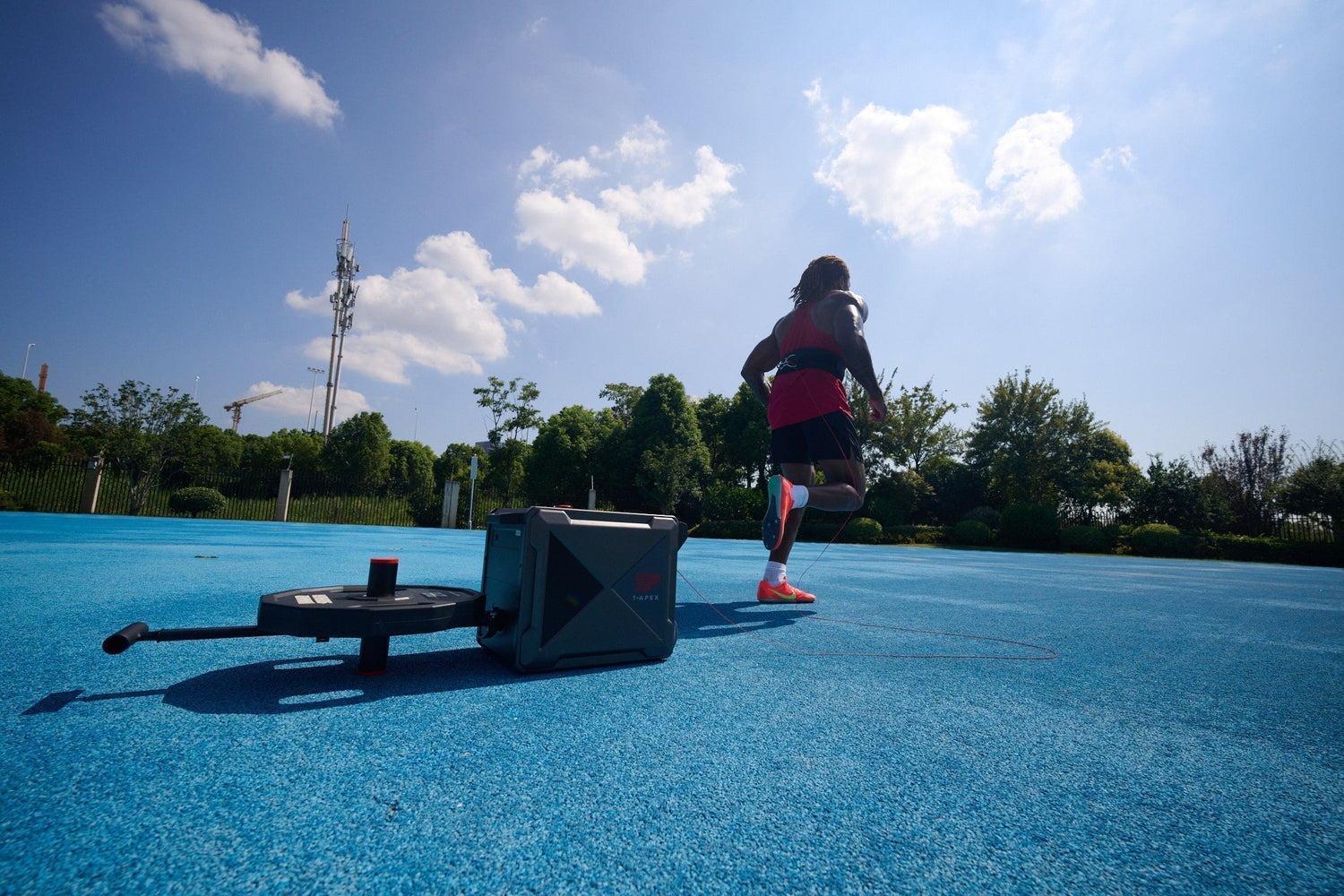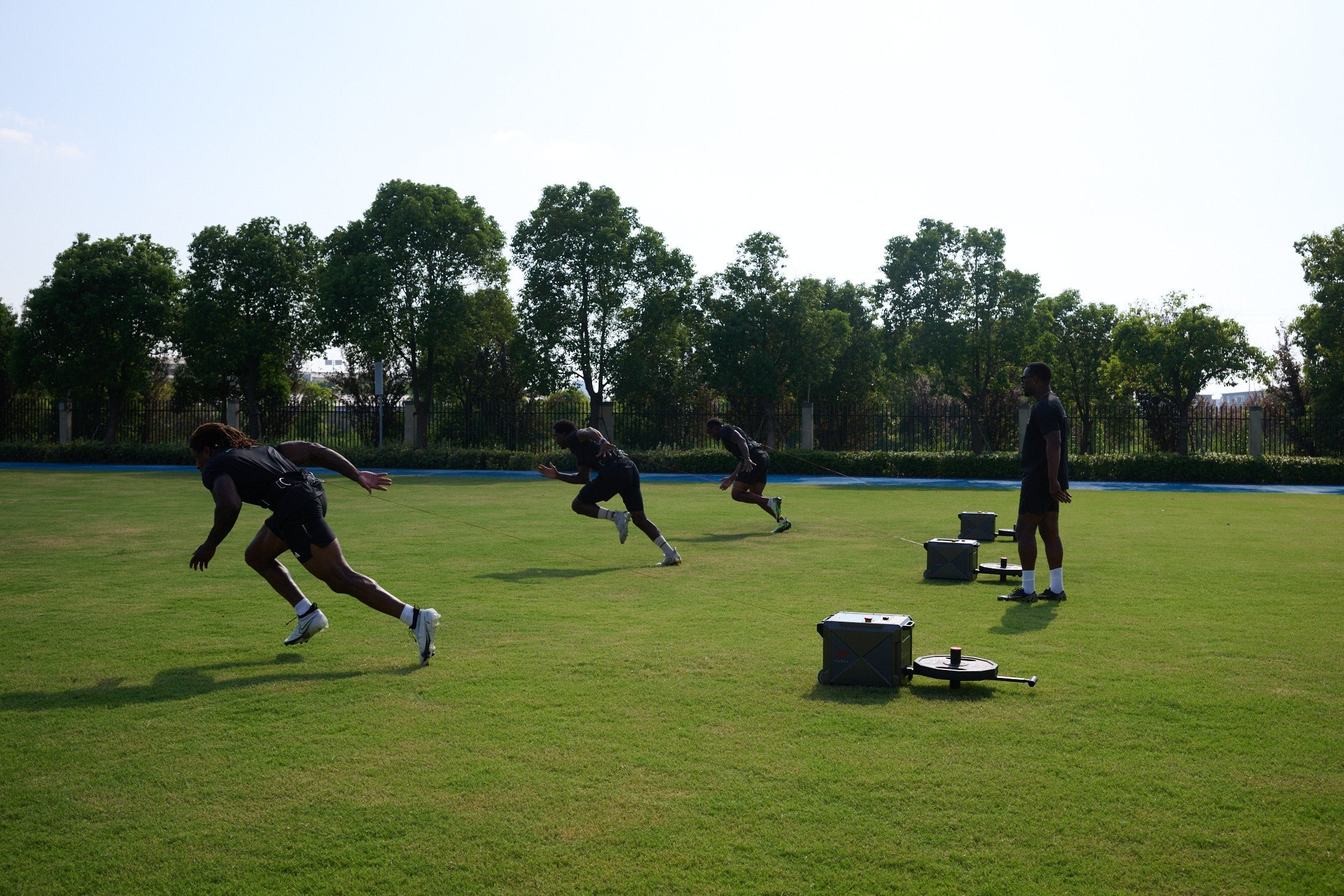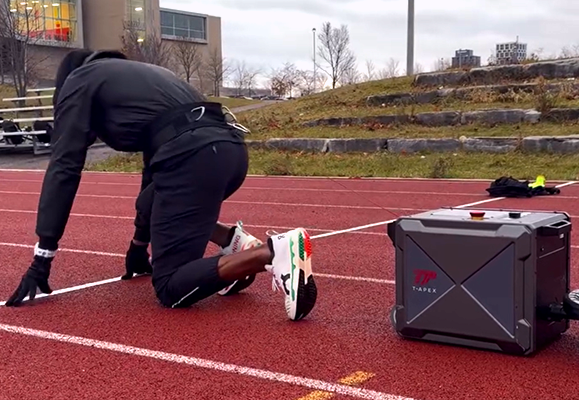When people talk about “speed,” they often think of straight-line sprinting. But in real competition, it’s not the sprint that decides the game—it’s the ability to slam on the brakes, change direction, and accelerate again. Whether it’s a basketball crossover, a soccer defender cutting off an attacker, or a running back making a sharp cut, change of direction (COD) ability often separates winners from everyone else.
Sports science also makes this clear: more than 70% of non-contact ACL injuries occur during deceleration or cutting. This means COD is not just about performance—it’s about injury prevention too.
The Three Phases of COD
Deceleration
- Key task: stopping body momentum quickly and safely.
- Common issue: “braking late” with extra steps, or placing too much stress on the knees.
Reorientation
- Key task: adjusting body angle and center of mass.
- Common issue: turning too slowly or losing balance during the cut.
Re-acceleration
- Key task: exploding out into the new direction.
- Common issue: being a half-step late, lacking the force to get back up to speed quickly.
Each phase matters. A sloppy brake, a slow turn, or a weak restart can all cost crucial seconds—and even expose the athlete to higher injury risk.
The Five Metrics That Matter
To move COD training beyond guesswork, five data points are essential:
- Speed – how fast the athlete moves between phases.
- Acceleration – how quickly they build momentum after the cut.
- Deceleration – how efficiently and safely they can stop.
- Displacement – how far the body travels during braking or cutting.
- Time – how long each phase and the drill as a whole actually take.
With these metrics, both athletes and coaches can finally see where the bottleneck is. For example:
- An athlete posts a decent total time but shows low deceleration rates → braking ability needs work.
- Peak speed is strong, but re-acceleration time is long → explosive restart is the weak point.
Instead of guessing, these metrics make training measurable and specific.
Why Deceleration Is the Limiting Factor
Among these five metrics, deceleration often proves to be the true limiting factor. Match-play data shows that in most team sports—soccer, rugby, hockey, American football—high-intensity decelerations occur more often, and with greater load, than accelerations. Braking is also a multi-step process, with the heaviest forces concentrated in the first few contacts.

👉 Training implication: focusing only on sprints ignores the biggest performance limiter. Without strong deceleration capacity, athletes risk slower cuts and higher injury rates. This is why deceleration ability is often the true limiting factor in COD.
Classic Drills and Their Limitations
5-0-5 Test
- Format: sprint 10 m, plant at 5 m, turn 180°, sprint back.
- Challenge: many athletes lean forward excessively when braking, or fail to plant cleanly, which slows down re-acceleration.
Lateral Shuffle + Sprint
- Format: perform 2–3 lateral shuffles, then cut forward into a sprint.
- Challenge: the transition from sideways to forward movement often feels stiff, with poor body position for a clean push-off.
Cone Drills (T-Drill, L-Drill)
- Format: multiple stops, turns, and accelerations.
- Challenge: athletes often chase faster overall times but neglect the quality of each cut—especially braking and torso rotation.
These drills are valuable, but they share the same limitation: they show the final result, not where the problem lies. Was the athlete too slow to brake? Did they waste space in the turn? Or did they fail to re-accelerate? Traditional methods cannot answer these questions.
How T-APEX Makes COD Smarter
Independent Resistance and Assistance
Unlike traditional setups that only increase resistance, T-APEX allows resistance and assistance to be adjusted independently. This dual control makes training more adaptable:
- Heavy resistance can overload braking, forcing stronger eccentric control and safer stopping mechanics.
- Assistance can reduce ground contact time, helping athletes practice quicker turnover and sharper re-acceleration.
- Combined, these options let coaches create highly specific scenarios that target each phase of COD, something traditional tools cannot achieve.

Data-Driven COD Metrics
Traditional tests provide only a final time—for example, a 5-0-5 result of 2.5 seconds—without showing why the athlete was fast or slow. T-APEX solves this by quantifying the five core COD metrics in real time:
- Deceleration – reveals braking efficiency and control before the cut.
- Displacement – shows how much space the athlete uses to reorient.
- Time – separates early vs. late braking phases, or re-acceleration timing.
- Acceleration & Speed – measure how quickly momentum is rebuilt after the turn.
Instead of guessing, coaches can pinpoint weaknesses: braking too slow, turning too wide, or accelerating too late.
From Guesswork to Precision
This phase-specific feedback directly improves training. For example:
- If deceleration rate is low, resistance can be increased to overload eccentric strength.
- If displacement is high, athletes can focus on body control and sharper angles.
- If re-acceleration is weak, assisted sprints can shorten contact time and build explosive push-off.
With T-APEX, weaknesses are not just observed—they are corrected with targeted load, real-time feedback, and measurable progress.
Smarter, Safer, More Motivating
When data enters the picture, training changes completely:
- More efficient – weaknesses are identified and improved directly, without wasted effort.
- Safer – potential risks in braking or cutting are spotted early, reducing injury risk.
- More motivating – every session shows measurable progress, keeping athletes engaged.
T-APEX doesn’t replace traditional COD training—it makes it smarter, safer, and more effective. For athletes, this means sharper cuts, faster re-acceleration, and fewer injuries holding them back.
Ready to move beyond stopwatch training? See how T-APEX turns COD drills into data-driven development, helping athletes cut faster, re-accelerate stronger, and reduce injury risk.


